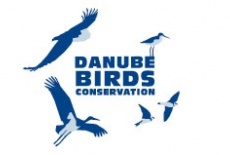Plants and habitats
Project by its actions contributes to conservation of following habitats:*91E0 – Alluvial forests with Alnus glutinosa and Fraxinus excelsior (Alno-Padion, Alnion incanae, Salicion albae) – in project area mostly fragments, mainly at banks of river branches, terrain depressions and inaccessible islands
91F0 – Riparian mixed forests of Quercus robur, Ulmus laevis and Ulmus minor, Fraxinus excelsior or Fraxinus angustifolia, along the great rivers (Ulmenion minoris) – naturally half of project area, but recently significantly reduced during planting euro-american poplar plantations
*91G0 – Pannonian woods with Quercus petraea and Carpinus betulus – only marginal occurrence at small locations in project area
*91H0 – Pannonian woods with Quercus pubescens – only marginal occurrence at small locations in project area
3130 – Oligotrophic to mesotrophic standing waters with vegetation of theLittorelletea uniflorae and/or of the Isoeto–Nanojuncetea – very rare habitat in several well preserved isolated river branches
3150 – Natural eutrophic lakes with Magnopotamion or Hydrocharion – type vegetation – habitat spread in various types of river branches and at artificial water bodies
3260 – Water courses of plain to montane levels with the Ranunculion fluitantisand Callitricho–Batrachion vegetation
3270 – Rivers with muddy banks with Chenopodion rubri p.p. and Bidention p.p.vegetation
6210 – Semi-natural dry grasslands and scrubland facies on calcareous substrates (Festuco-Brometalia) (* important orchid sites)
6510 – Lowland hay meadows
The remaining area is covered with hybrid poplar plantations, arable land, sedge and reed stands, monocultures of various trees (other than hybrid-poplars) and areas without vegetation (usually water bodies).
There is a recorded occurrence of important orchid populations of military orchidOrchis militaris, bug orchid Orchis coriophora, burnt orchid Orchis ustulata, autumn lady's tresses Spiranthes spiralis, nettle Urtica kioviensis, forest grapeVitis sylvestris, vienna squill Scilla vindobonensis, water aloe Stratiotes aloidesand bottle brush Hippuris vulgaris within the project area.
















